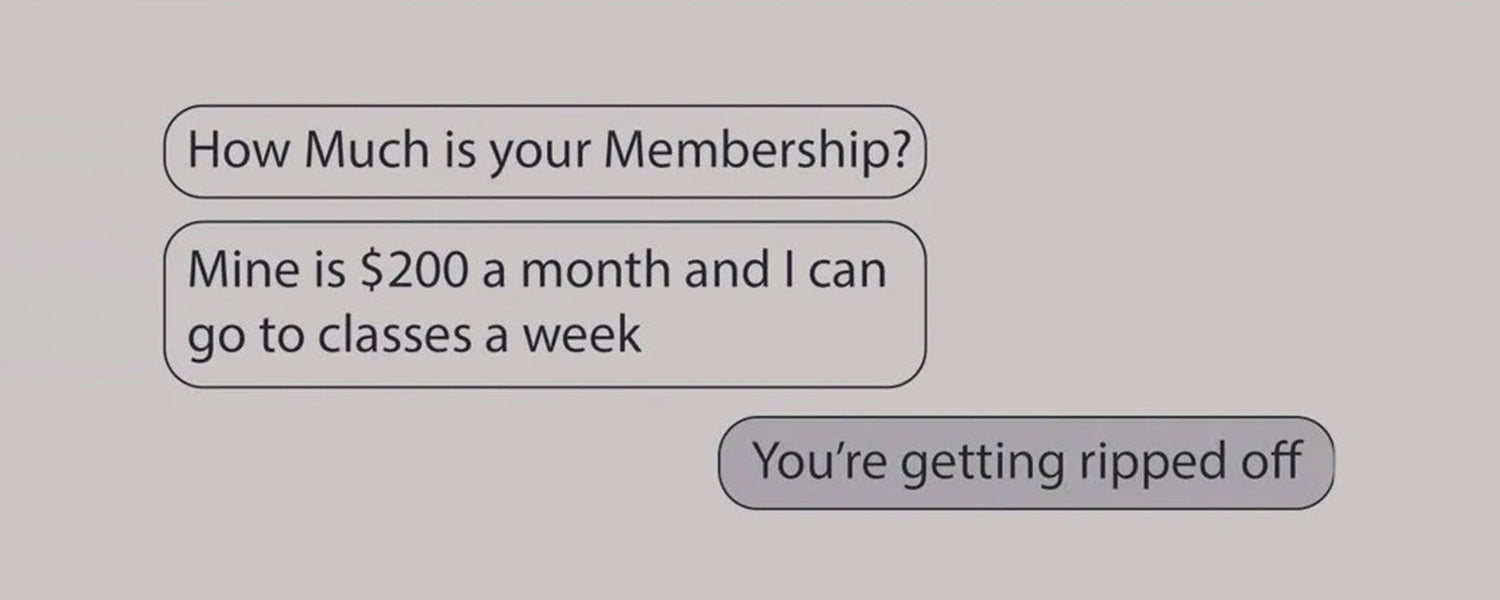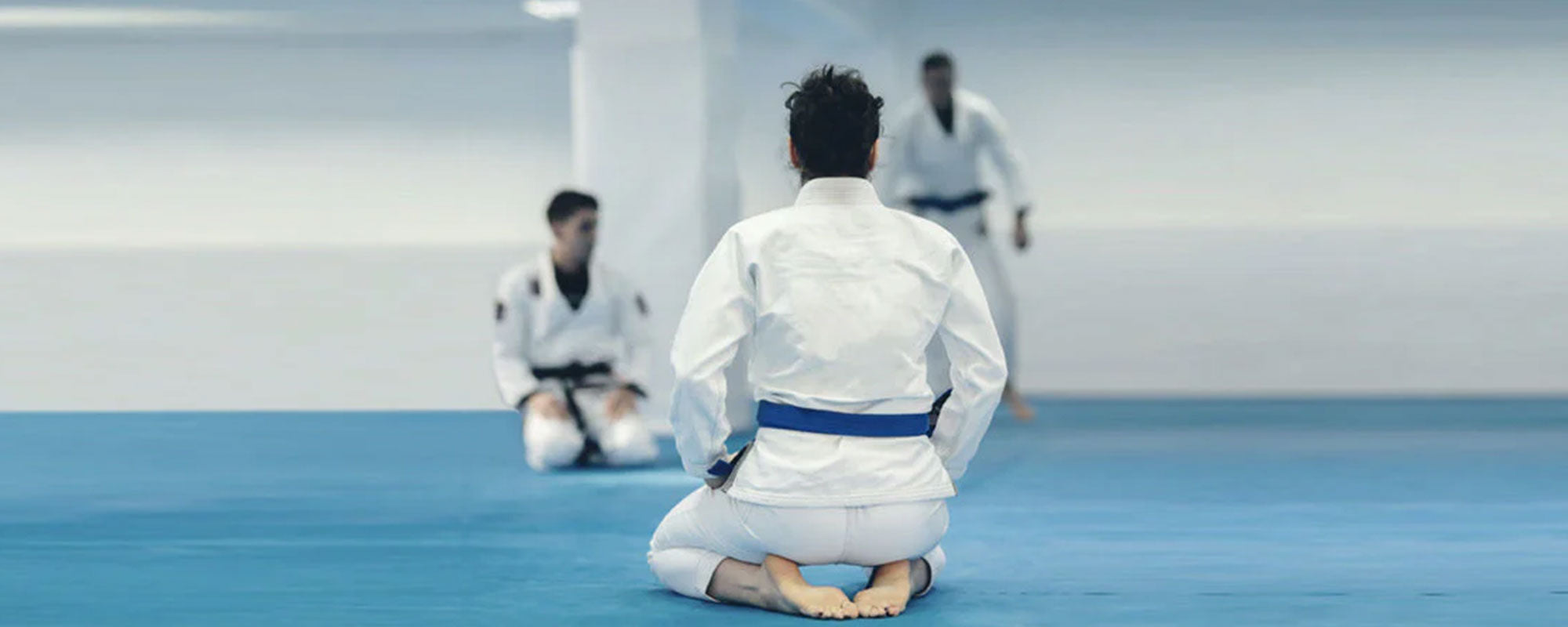Table of content
BJJ isn’t supposed to be too demanding a sport in terms of expenses and costs for training. At least, that’s how it should be. However, given the free market, it’s unfortunately very normal to see private gyms and schools charge exorbitant amounts for membership / sign-ups / classes / training.
It’s true that there’s no fixed standard cost for a monthly or annual BJJ training program, but there are still many ways to know if your BJJ gyms are ripping you off.
For starters, let’s take a look at the usual things that are included or excluded from the average membership perks:
- Number of classes/weeks
- Gym amenities (weightlifting, showers, laundries, etc.)
- Gi and No Gi restrictions or specific time periods to train in both disciplines
- Promotion Fees
- Promotions based on attendance
- Gi Color Restrictions
- Mandatory Gym-owned Gi’s to be eligible for class
Again, while there’s no standard for what goes and what’s actually needed, a lot of BJJ gyms and schools justify their prices with a large variety of reasons.
This is where some people call the school out as being a “McDojo” (A term used for schools and dojos that either don’t teach real martial arts or teach good martial arts but charge way too much for it, or have a reputation for being a scam)

As the above screenshot highlights, one of the most important things you need to do whenever you’re going to sign up for a gym is to talk around.
1. BJJ Gym Costs Becoming Unstably High
Financial expenses are considered subjective matters and thus, not all people might find some famous and ridiculously expensive schools as worth breaking the bank.
For example, for some, it may be life-saving if a gym offers to wash their Gis enough for them to pay the additional $40-50/month for it. Whereas, for others, this mandatory charge becomes a reason to consider quitting BJJ altogether because they can’t find another gym nearby.
But does this mean that you should accept all the expenses that a gym says piles up with a nodding head and an open wallet? Certainly not.
It’s important to note that while a few people might not have a problem with the huge prices, this is inevitably helping propagate a culture of exorbitant expenses that show no signs of slowing down.
By not realizing the exclusionary direction the industry is taking, we’re risking losing future practitioners and enthusiasts of BJJ. Considering that the most affordable best BJJ Gi in the market is around $60, we’re scaring off potentially anyone interested in BJJ by making the initial costs of training around $600-700.
According to a quick survey and conversations with practitioners across different states and regions, it’s come to light that the bigger the city or the more metropolitan an area is, the average gym fee is proportionately high as compared to those in less populated and industrialized/urbanized areas.
For example, NYC, London, LA, etc. are locations where you’ll find the highest average gym fee costs. Although, some practitioners report that even in these areas, you can find small-time gyms that allow you to train any time you want for a very low fee.
So, how does a beginner of BJJ know that they’re being ripped off?
Here are the 4 signs that tell you that you’re not getting the value of your input:
1.1. The Fee to Membership Privileges Ratio
What You Give and What You Get
The first thing you need to do is have a breakdown of all the things that you’re being charged for. After all, nobody’s saying we should sacrifice quality if we can afford it. But there needs to be accountability to ensure that you are, in fact, receiving fair quality.
You’ll have a list of amenities and facilities that the gym is actually providing and it will also help you understand what parts or perks of the dojo are accessible to you.
To help you get a grasp of the worst kind of conditions that people have faced, here’s a couple of situations shared by people on various social platforms as legitimate, dream-crushing experiences.
1: There are certain gyms and schools that go for monthly training fees, for example, $200, and charge you $150 for your promotion to a blue belt. Then you get charged $200 for your promotion to purple belt, $300 for brown and $400 for a black belt.
(It’s to be noted that BJJ belt promotions are strictly at the discretion of the instructor, there’s no rule in all of BJJ to charge or even conduct tests for promotions)
2: Some gyms charge $200/monthly for giving you only 2-3 classes per week. Whereas, some would give full-time access for as low as $80.
3: It’s to be noted that some expensive schools have reportedly also offered to wash the Gi for additional costs. This, for many, is definitely an appealing factor because many people either don’t want to or know how to wash their Gis.
As you can imagine, like all industries, there’s a lot of variety in the BJJ gyms and schools you’ll come across. There are going to be arguments on both sides of the subject but you’ll have to be the judge of it all.
A lot of people don’t mind the above issues and enroll in these schools because of either fame of the institution or instructors, due to lack of other options, or simply because they think this is how things go.
1.2. The Training Quality to Quality Assurance Ratio
Nobody other than you can be sure of how good the teaching is and how well you’re learning.
Obviously, it’s natural to assume that instructors will be incentivized to present exaggerated progress reports but you’re sparring and rolling sessions will reveal your actual progress to you.
A BJJ practitioner can tell whether they’re doing better than before and whether their instructors are giving them the due attention and feedback they require.
A couple of red flags in terms of quality assurance of teaching in BJJ gyms involve observing the dojo’s practice for a period of time. Whenever you go try a gym out, notice how the instructor engages with their students as a whole and then individually, when they roll in pairs.
If the instructions appear vague, scripted or not subjective enough for your particular scenario, test them out anyway to make sure that your instructor isn’t really doing their job.
If you don’t understand something, ask questions and see if you don’t get a clear answer that satisfies your curiosity. There’s nothing you’re not supposed to know. Even if there are techniques and moves that are dangerous, your instructor needs to enlighten you.
Don’t believe the hype so long as you experience it yourself. If a famed instructor is really good, you’ll be able to tell how well they teach by considering how well you’ve learned.
1.3. The Legitimacy of Trainers and Verifications
Inappropriate or fraudulent administrative practices are sadly, not that uncommon in BJJ schools as well.
When it comes to faulty administrative practices, people have reported management as being too aggressive, non-responsive to complaints and repeatedly voiced concerns, too rigid in their policies, and even ignorant of obvious practical problems.
The issue of beginners feeling paranoid is legitimately based on some horrendous but nonetheless true experiences shared by many BJJ practitioners, most but not all of which were women.
Especially given the allegations and accusations that are piling up against instructors across the world, it’s disheartening and sometimes downright painful to hear the things people go through.
From delaying well-deserved belt promotions to sexual harassment, there are a number of issues that have surfaced out of several gyms and dojos of every size, in any given region.
It doesn’t matter whether the schools are owned or even taught by reputed masters, notable legends, contemporary hall of famers, or local black belts.
The allegations against De La Riva, Roberto Cyborg Abreu’s Fight Sports instructor Marcel Goncalves and Rodrigo Da Costa Oliveira are some cases that have tarnished the reputation of the sport but are nonetheless, issues that need to be addressed.
Oppressive tendencies may seem to discriminate in gender but not in geography or social status. They can happen everywhere and it doesn’t matter who the assailant is.
Ask around and make sure the BJJ gym you’re enrolling in conducts background checks. While it’s possible that habitual harassers might not always have a proven track record, it still says a lot if there are possible allegations as well.
You don’t want your BJJ journey to be filled with traumas. Therefore, make sure that the gym that’s charging you for a membership ensures your physical, psychological and political safety.
1.4. Your Personal Feelings
How you feel socially and politically in a gym environment means how secure you feel in the gym.
A couple of people, especially women, have reported feeling ousted by the rest of the gym and whether the instructor was in on it or couldn’t stop it from happening, they’re at fault.
Your political, psychological and social security means that you’re not going to be discriminated against based on your identity, gender, age, religion, background, culture, etc.
A good gym needs to not only be able to spot and stop this from happening but should also be vocal about these issues from the start.
Some black belt masters have a strict, “leave it outside the gym” policy that can be efficient in ensuring everyone gets equal treatment without prejudice or pre-conceived notions or beliefs.
BJJ is about empowerment and if your gym is not making you feel secure and protected enough to be able to learn how to defend yourself, you’re being ripped off.
While it may not necessarily be in terms of monetary value, but you’re being deprived of the fundamental benefits of the sport that you deserve to have.
Some gyms make it their policy to only allow Gi’s that have the gym’s logo patch on it. Whereas, a few even take it so far as to mandate their own Gi’s, Rash guards while also making it impossible for you to train without their whole apparel.
For most practitioners, this may not matter but for the few for whom it does, it can be the difference between wanting to practice BJJ or leave it altogether.
Your personal preference goes a long way in determining how well you’re going to do throughout your journey. There are many people who wouldn’t want to train in a Gi that isn’t of their favorite color, size, material or even brand.
2. Conclusion
The fact remains that there are no accepted rules and standards for a BJJ gym membership and training prices in the world. But that doesn’t mean individuals can’t judge whether they’re overpaying or getting nothing out of their investment.
Don’t think of anything uncomfortable or uncalled for as the norm without confirming it with your peers and fellow practitioners online.
While it is a sport centered around the art of grappling, there’s a difference between grappling and groping. Just like there’s a difference between giving extra time to certain techniques every now and then and giving extra time off-hours on a daily basis.
Similarly, there can be gyms that are great in their environment, teaching and learning but are just out of your range. For these people, sadly, this isn’t going to change and they’ll need to find somewhere else to train.
For those who can afford it, it’s always useful to know that you, as a paying member, have the right to leave whenever you don’t feel like you’re getting enough.
There’s nothing to feel bad about if you leave a place simply because you didn’t like it. Luckily, a lot of great BJJ practitioners are around and even more, such as yourself, are coming about.












Leave a comment
This site is protected by hCaptcha and the hCaptcha Privacy Policy and Terms of Service apply.